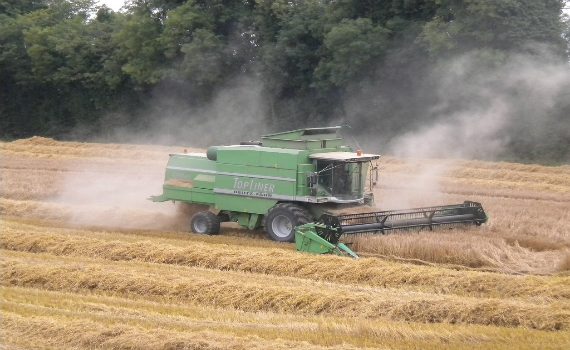About Arable Farming in Ireland
Tillage farms in Ireland
There are over 300,000 hectares of land in Ireland is used in tillage farming. The main yield from this land are Cereal crops such as wheat, barely and oats.
From 2000 to 2010 the farmers of Ireland produced the highest average wheat and second highest average barley yields in the world.
Arable Farming in Ireland
Ireland has the highest average wheat yield in the world due to it's cool temperate climate and high annual rainfall. To put that into perspective, ireland recorded a wheat yield nearly 10% higher than the UK over a 10 year period and also triumphed New Zealand who hold the record in wheat yield. Although the UK has a similar climate to Ireland, climatically ireland holds a 10% advantage over the majority of the UK. There are over 300,000 hectares of land in Ireland is used in tillage farming.


Cereal Crops Ireland
The main yield from this land are Cereal crops such as wheat, barely and oats. From 2003 to 2012 Ireland recorded average wheat yields of 8.7t/ha compared to 7.7t/ha for the UK. In arable farming, irish cereals operate on 300,000ha of land and this is mainly focused in the south-east region of the country-Dundalk, Rosslare and Cork. It is widely acknowledged in the arable and tillage sector that Ireland is easily capable of expanding this cereal growth area. In fact in 1850, Ireland had 1m ha of cereal growth. It is thought among irish farmers and industry experts however, that the area will not be expanded in the near future. The reasoning for this is because there's a big emphasis on milk production in ireland at the moment because of the EU milk quotas being lifted in 2015 and also wheat costs continue to rise. The benefit of high yields is unfortunately curbed somewhat by high disease-control costs and a short period in which drilling can take place and wheat can be harvested.
Increasing Barley Yields in Ireland
A number of growers in Cork ceased their wheat operations due to too much rainfall which meant Winter wheat area dipped to 70,000ha , and for the first time in Ireland winter barley yield with 80,000ha rose above wheat yield. Cork arable and tillage farmers had difficulty controlling septoria, a disease very prevalent in wet weather. Septoria can diminish wheat yield by 50% quite easily. Fusarium, a disease typical to wet summers can also be a problem for wheat growers. Over recent years barley yields have risen also due to it costing less to produce than wheat.
Oilseed rape diminished from a high of 10,000ha in 2015 to a low of 4,000ha in 2012 due to particularly wet year. Field beans have risen slightly to 20,000ha.